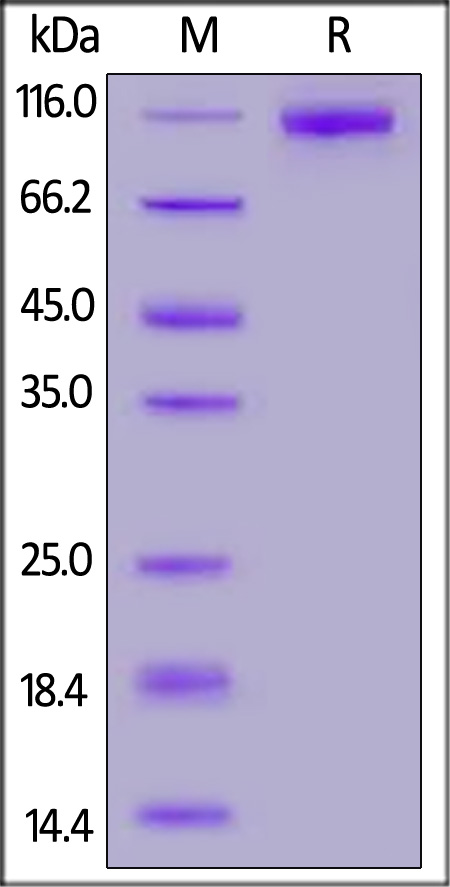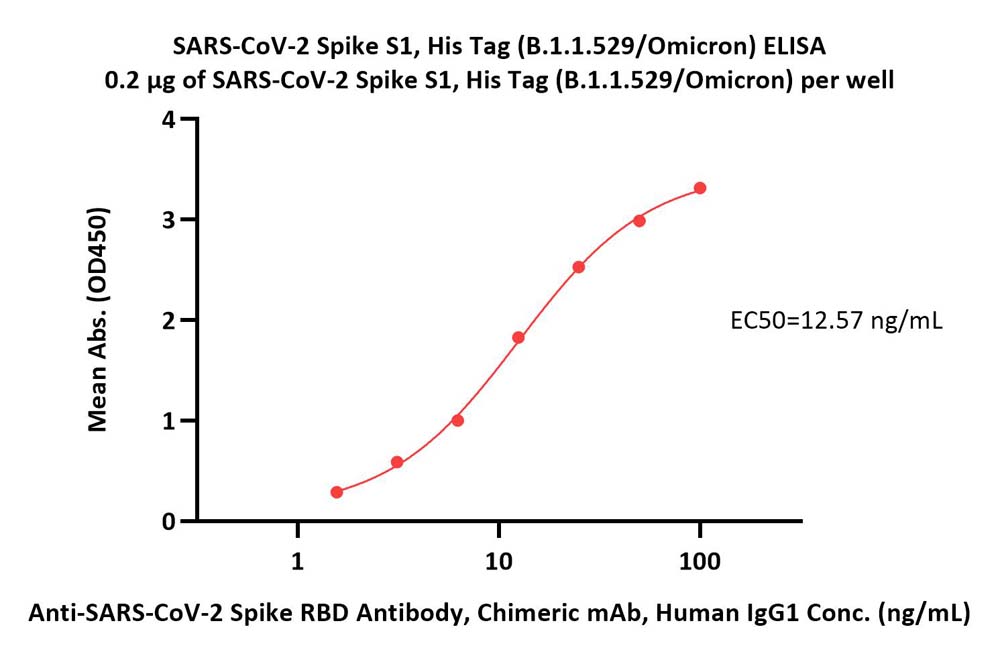Ferritin nanoparticle complex with porcine epidemic diarrhea virus spike protein induces neutralizing antibody response against PEDV in mouse modelsSudaraka Tennakoon, Park, Lee
et alMicrob Pathog (2025)
Abstract: As the spike protein is the major antigen that contains various neutralizing epitopes against porcine epidemic diarrhea virus (PEDV), numerous vaccine trials employing the spike protein have been established. In this study, we developed a ferritin-based nanoparticle vaccine for PEDV by combining gene delivery functions of recombinant adenoviruses. To generate nanoparticles, the S1 subunit of the spike protein was genetically linked to the N-terminus of the human ferritin heavy chain (hFTHC), and recombinant adenoviruses were generated to deliver the genetic material. The efficacy of S1 conjugated human ferritin heavy chain (S1-hFTHC) adenoviruses against S1 adenoviruses was evaluated in BALB/c mice immunized intramuscularly without adjuvant. Two weeks after the final boost, we observed a significantly higher IgG response in S1-hFTHC immunized mice compared with the S1 immunized mice, and results from the virus neutralization assay revealed robust virus neutralization activity in the S1-hFTHC immunized group compared to the S1 immunized group. Furthermore, analysis of the serum based on IgG and neutralizing titers 40 days after the last vaccination revealed the significance and longevity of the immune response induced by S1-hFTCH compared to S1 only. This strategy elucidates the efficacy of combined vaccine strategies for developing promising vaccine candidates against PEDV.Copyright © 2025. Published by Elsevier Ltd.
Modulatory Effects of the Recombinant Middle East Respiratory Syndrome Coronavirus (MERS-CoV) Spike S1 Subunit Protein on the Phenotype of Camel Monocyte-Derived MacrophagesHussen, Al-Mubarak, Shawaf
et alBiology (Basel) (2025) 14 (3)
Abstract: Middle East Respiratory Syndrome Coronavirus (MERS-CoV) is an emerging zoonotic pathogen with different pathogenesis in humans and camels. The mechanisms behind the higher tolerance of camels to MERS-CoV infection are still unknown. Monocytes are innate myeloid cells that are able, depending on the local stimulation in their microenvironment, to differentiate into different functional subtypes of macrophages with an impact on the adaptive immune response. Several in vitro protocols have been used to induce the differentiation of monocyte-derived macrophages (MDMs) in human and several veterinary species. Such protocols are not available for camel species. In the present study, monocytes were separated from camel blood and differentiated in vitro in the presence of different stimuli into MDM. Camel MDMs generated in the presence of a combined stimulation of monocytes with LPS and GM-CSF resulted in the development of an M1 macrophages phenotype with increased abundance of the antigen-presentation receptor MHCII molecules and a decreased expression of the scavenger receptor CD163. The expression pattern of the cell markers CD163, CD14, CD172a, CD44, and CD9 on MDM generated in the presence of the MERS-CoV S1 protein revealed similarity with M-CSF-induced MDM, suggesting the potential of the MERS-CoV S1 protein to induce an M2 macrophages phenotype. Similarly to the effect of M-CSF, MERS-CoV-S protein-induced MDMs showed enhanced phagocytosis activity compared to non-polarized or LPS/GM-CSF-polarized MDMs. Collectively, our study represents the first report on the in vitro generation of monocyte-derived macrophages (MDMs) in camels and the characterization of some phenotypic and functional properties of camel MDM under the effect of M1 and M2 polarizing stimuli. In addition, the results suggest a polarizing effect of the MERS-CoV S1 protein on camel MDMs, developing an M2-like phenotype with enhanced phagocytosis activity. To understand the clinical relevance of these in vitro findings on disease pathogenesis and camel immune response toward MERS-CoV infection, further studies are required.
Neutralization and spike stability of JN.1-derived LB.1, KP.2.3, KP.3, and KP.3.1.1 subvariantsLi, Faraone, Hsu
et almBio (2025)
Abstract: During the summer of 2024, coronavirus disease 2019 (COVID-19) cases surged globally, driven by variants derived from JN.1 subvariants of severe acute respiratory syndrome coronavirus 2 that feature new mutations, particularly in the N-terminal domain (NTD) of the spike protein. In this study, we report on the neutralizing antibody (nAb) escape, infectivity, fusion, and spike stability of these subvariants-LB.1, KP.2.3, KP.3, and KP.3.1.1. Our findings demonstrate that all of these subvariants are highly evasive of nAbs elicited by the bivalent mRNA vaccine, the XBB.1.5 monovalent mumps virus-based vaccine, or from infections during the BA.2.86/JN.1 wave. This reduction in nAb titers is primarily driven by a single serine deletion (DelS31) in the NTD of the spike, leading to a distinct antigenic profile compared to the parental JN.1 and other variants. We also found that the DelS31 mutation decreases pseudovirus infectivity in CaLu-3 cells, which correlates with impaired cell-cell fusion. Additionally, the spike protein of DelS31 variants appears more conformationally stable, as indicated by reduced S1 shedding both with and without stimulation by soluble ACE2 and increased resistance to elevated temperatures. Molecular modeling suggests that DelS31 enhances the NTD-receptor-binding domain (RBD) interaction, favoring the RBD down conformation and reducing accessibility to ACE2 and specific nAbs. Moreover, DelS31 introduces an N-linked glycan at N30, shielding the NTD from antibody recognition. These findings underscore the role of NTD mutations in immune evasion, spike stability, and viral infectivity, highlighting the need to consider DelS31-containing antigens in updated COVID-19 vaccines.IMPORTANCEThe emergence of novel severe acute respiratory syndrome coronavirus 2 variants continues to pose challenges for global public health, particularly in the context of immune evasion and viral stability. This study identifies a key N-terminal domain (NTD) mutation, DelS31, in JN.1-derived subvariants that enhances neutralizing antibody escape while reducing infectivity and cell-cell fusion. The DelS31 mutation stabilizes the spike protein conformation, limits S1 shedding, and increases thermal resistance, which possibly contribute to prolonged viral persistence. Structural analyses reveal that DelS31 enhances NTD-receptor-binding domain interactions by introducing glycan shielding, thus decreasing antibody and ACE2 accessibility. These findings emphasize the critical role of NTD mutations in shaping viral evolution and immune evasion, underscoring the urgent need for updated coronavirus disease 2019 vaccines that account for these adaptive changes.
Role of glycosylation mutations at the N-terminal domain of SARS-CoV-2 XEC variant in immune evasion, cell-cell fusion, and spike stabilityLi, Faraone, Hsu
et alJ Virol (2025)
Abstract: Severe acute respiratory syndrome coronavirus 2 (SARS-CoV-2) continues to evolve, producing new variants that drive global coronavirus disease 2019 surges. XEC, a recombinant of KS.1.1 and KP.3.3, contains T22N and F59S mutations in the spike protein's N-terminal domain (NTD). The T22N mutation, similar to the DelS31 mutation in KP.3.1.1, introduces a potential N-linked glycosylation site in XEC. In this study, we examined the neutralizing antibody (nAb) response and mutation effects in sera from bivalent-vaccinated healthcare workers, BA.2.86/JN.1 wave-infected patients, and XBB.1.5 monovalent-vaccinated hamsters, assessing responses to XEC alongside D614G, JN.1, KP.3, and KP.3.1.1. XEC demonstrated significantly reduced neutralization titers across all cohorts, largely due to the F59S mutation. Notably, removal of glycosylation sites in XEC and KP.3.1.1 substantially restored nAb titers. Antigenic cartography analysis revealed XEC to be more antigenically distinct from its common ancestral BA.2.86/JN.1 compared to KP.3.1.1, with the F59S mutation as a determining factor. Similar to KP.3.1.1, XEC showed reduced cell-cell fusion relative to its parental KP.3, a change attributed to the T22N glycosylation. We also observed reduced S1 shedding for XEC and KP.3.1.1, which was reversed by ablation of T22N and DelS31 glycosylation mutations, respectively. Molecular modeling suggests that T22N and F59S mutations of XEC alter hydrophobic interactions with adjacent spike protein residues, impacting both conformational stability and neutralization. Overall, our findings underscore the pivotal role of NTD mutations in shaping SARS-CoV-2 spike biology and immune escape mechanisms.IMPORTANCEThe continuous evolution of severe acute respiratory syndrome coronavirus 2 (SARS-CoV-2) has led to the emergence of novel variants with enhanced immune evasion properties, posing challenges for current vaccination strategies. This study identifies key N-terminal domain (NTD) mutations, particularly T22N and F59S in the recent XEC variant, which significantly impacts antigenicity, neutralization, and spike protein stability. The introduction of an N-linked glycosylation site through T22N, along with the antigenic shift driven by F59S, highlights how subtle mutations can drastically alter viral immune recognition. By demonstrating that glycosylation site removal restores neutralization sensitivity, this work provides crucial insights into the molecular mechanisms governing antibody escape. Additionally, the observed effects on spike protein shedding and cell-cell fusion contribute to a broader understanding of variant fitness and transmissibility. These findings emphasize the importance of monitoring NTD mutations in emerging SARS-CoV-2 lineages and support the need for adaptive vaccine designs to counteract ongoing viral evolution.


 +添加评论
+添加评论























































 膜杰作
膜杰作 Star Staining
Star Staining















